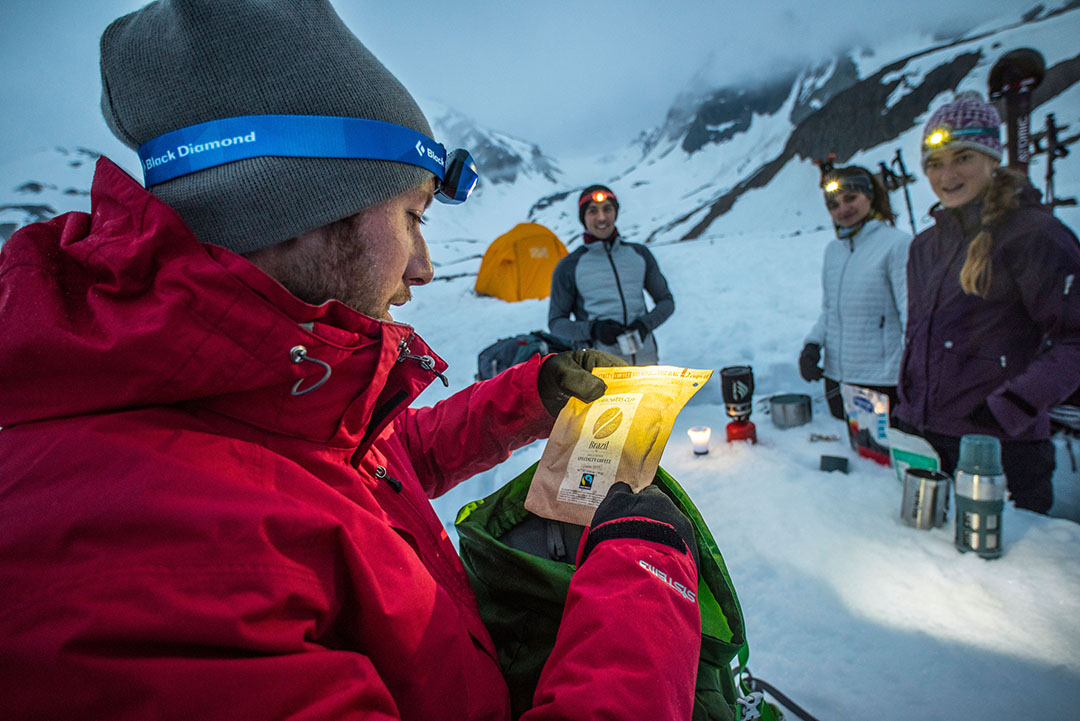There’s a lot to like about dehydrated meals. They save space and weight in your pack, prepare efficiently at camp, and cater to personal tastes and diets. Better yet, there’s also lots to love about dehydrating these meals yourself. Aside from the above, they’re completely customizable, often healthier than store-bought, and are a huge money saver. But the thought of starting out on your own can be intimidating. If you’re unfamiliar, yet intrigued, dial in to some tips to get comfortable dehydrating at home.

1. Invest in the Gear
Between the process of preparing your food for dehydration and the equipment you use, there are several areas where investing in products will make the whole process more enjoyable. At a minimum, get a good dehydrator. These range from base to advanced models with or without temperature adjustment, vertical or horizontal airflow, size, and of course cost. They range anywhere from $45 to $400, so unless your budget says otherwise, it’s easy to start on the cheaper end to get a feel for how the equipment works. Alternative methods like sun drying are useful too (think raisins), where the only things you may need to invest in are an animal-safe netted enclosure, or time for the sun to work its magic. And if you have an oven to use, then you’ve taken care of a large chunk of the finances already.
2. Get Creative with Ingredients
One of the biggest pleasures stemming from this process is making it as personal as you’d like with the variety of ingredients that exist out there. Can’t find a dehydrated noodle dish without a certain vegetable, or can’t find the right breakfast you need? Those problems fix themselves at home. While preparing your recipes, consider shortcuts that can be purchased at the grocery store. Powdered peanut butter or milk can help boost breakfasts and savory meals, or provide dairy that most dehydrating brands won’t include. If you have a favorite meal, have faith—Odds are it can be prepared with dehydration, whether it be all at once or in steps continued at camp.
3. Take Notes
You’ll feel like a recipe tester the more you dehydrate at home. Keep a notebook handy while preparing meals and tweaking steps along the way. You may find you like certain temperature and time pairings better than others. In general, fruits and vegetables should be dehydrated between 125°F and 135°F, cooked pastas and whole meals at 135°F, and meats at 145°F. If you’re using an oven that can’t reach these temperatures, experiment with the time it takes, or prop your oven door open from time to time to promote air flow and even dehydrating. Sodium, seasonings, and steps are things that can often vary from process to process.
General Do’s and Don’ts
Do:
- Add breadcrumbs to ground meat prior to cooking and dehydrating. These will absorb moisture while cooking, and allow for a more moist product after rehydrating.
- Store foods in a tightly sealed mason jar or freezer bag in a cool dry place for four months to a year. If looking to store long periods of time, consider vacuum sealing bags to store in the freezer.
- Bring additional oil in a small to-go bottle for flavoring and calories. Fresh hard cheeses like parmesan can keep longer out of the fridge depending on your trek to camp, but shelf-stable options also exist there.
- Flip or redistribute food for an evenly dry final product.
Don’t:
- Set your temperature too high. With meat, fruits, and vegetables, too hot of an environment will lead to case hardening, where the exterior of the product dries and the interior remains moist.
- Dehydrate it raw if you wouldn’t eat it raw!
- Dehydrate foods high in dairy, fats, or oils. These can go rancid and will be unsafe to eat after dehydrating.
Ethan Gresko
Ethan is a New York State native who enjoys day hikes between the Adirondacks and Hudson Valley, to the Finger Lakes. He loves the written word, is an aspiring 46er, and a firm believer that you have to go down before you go up!
Related Posts
April 2, 2024
10 Tips for Mountain Biking Etiquette During Mud Season
One rough spring could ruin the…




